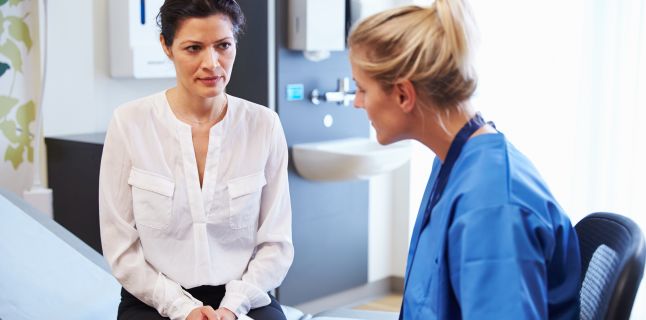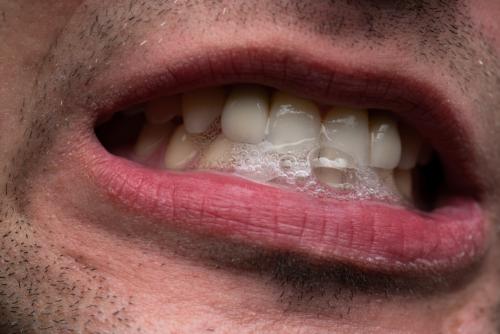Are you going to the toilet often?

- the use of diuretic medicines - slowing intestinal transit (constipation) - age-related cognitive decline This discomfort occurs in two forms: a spastic (contracted, hypercontractant) form leading to urinary retention due to the fact that the muscles are hypercontracted and . The main signs and symptoms are, partial or total, incontinence or frequent need for urination (polakiuria), often associating disorders of defecation and sexual dynamics. Confirmation of diagnosis involves a general clinical examination, neurological examination and urological examination, and as paraclinical examinations we need: 1. laboratory tests (creatinine, urea, alkaline reserve, serum ionogram, a summary urine test, and if a possible urinary infection is detected, it is also necessary to determine the susceptibility of the germ to a particular antibiotic. is indicated to visualize kidney status and urine reflux, as well as urinary dilation, and possible barriers to confirmation of the diagnosis. urography is done to determine possible obstructions in the urinary tract such as small calculi or even potential tumors.
ureterocistography (micsal or retrograde) helps us to determine the functionality and morphology of the bladder and urethra by injecting a contrast substance. uretrocistoscopy required to confirm possible bladder or sphincter lesions. in special cases, when other investigations do not provide sufficient information, MRI with contrast substance is also indicated. Differential diagnosis can be made with: - various neurological conditions (tabes, multiple sclerosis, Parkinson's disease, syringomyelia, stroke) - urgent urge of urinary infections (urethritis, cystitis) associated with fever and altered general condition. - incontinence from the uretero-vezico-vaginal fistula.
- prostatic pathology in male sex. The most common complications are urinary infections resistant to repeated but also bladder infections that gradually lead to renal impairment in total, eventually ending with renal failure. Treatment differs according to the two forms of the condition, but the purpose is a common one and consists in restoring bladder activity to achieve normal mictional comfort to the patients in question. For the spastic form, it is intended to trigger the involuntary mical act by abdominal cutaneous stimulation, or by means of drug therapy aimed at relaxing the striated muscles, and in the second form the treatment aims at the control of urinary incontinence by drugs or by surgical intervention depending on degree . Surgery involves muscle and ligament restoration, bladder repositioning or artificial sphincter implant to control urine flow and prevent leakage.
It is also possible to inject various substances into the tissue around the urethra to help repair the tissue, and these substances contain collagen and what they do twice a year with local anesthesia; . Besides the treatment of the two forms, particular attention should be paid to renal lithiasis frequently associated with this pathology. The treatment of kidney lithiasis aims at the removal of stones by modern methods such as endoscopic lithotripsy, a minimally-invasive technique that offers the patient a much faster recovery than classical surgery, but depending on size and number of calculi, it can also make extracorporeal lithotripsy . Medical education is paramount in terms of knowledge about its pathology, fluid consumption, but also the way it should manage its medication, or in special cases even the autosoning that needs to be done under proper hygiene conditions for. Prevention includes various simple methods to follow, such as: - adjusting intestinal transit and avoiding constipation, - avoiding drinking alcohol, coffee and tobacco, - avoiding heavy weight gains or efforts, - learning the double evacuation exercise .
Neurogenic bladder is a syndrome that can live without problems and can be treated by new and minimally-invasive techniques that give patients a normal lifestyle without worrying about urinating at small intervals. .
Source : sfatulmedicului.ro
Views : 3026
Popular Article
- (photo) Nude becomes art.
Posted: 2018-03-17, 9440 views.
- The harmful effects of air conditioning on the skin
Posted: 2017-06-08, 8112 views.
- 3 causes of dyed hair discoloration
Posted: 2017-06-15, 7996 views.
- Why early puberty occurs in girls: symptoms, favors, diagnosis and treatment
Posted: 2017-10-24, 7854 views.
- Good or bad skin treatments in the hot season
Posted: 2017-06-07, 7596 views.
Recommendations
- (photo) Nude becomes art.
Posted: 2018-03-17, 9440 views.
- The harmful effects of air conditioning on the skin
Posted: 2017-06-08, 8112 views.
- 3 causes of dyed hair discoloration
Posted: 2017-06-15, 7996 views.
- Good or bad skin treatments in the hot season
Posted: 2017-06-07, 7596 views.
- Risks of practicing sports on hot days
Posted: 2017-06-12, 7186 views.
 4 effective ingredients in the fight against acne.
4 effective ingredients in the fight against acne. How to get rid of hiccups fast
How to get rid of hiccups fast The wheat bran diet: the secret of lost pounds as if by magic
The wheat bran diet: the secret of lost pounds as if by magic The recipe that will sweeten your soul this weekend!
The recipe that will sweeten your soul this weekend!  Is it dangerous or not to refreeze meat after thawing it?
Is it dangerous or not to refreeze meat after thawing it?  The unusual sign of diabetes indicated by saliva.
The unusual sign of diabetes indicated by saliva. What to drink to boost your immune system.
What to drink to boost your immune system. 10 foods that help you never age.
10 foods that help you never age. What actually happens in your body if you drink a cup of coffee for breakfast
What actually happens in your body if you drink a cup of coffee for breakfast 5 surprising benefits of chia seeds
5 surprising benefits of chia seeds